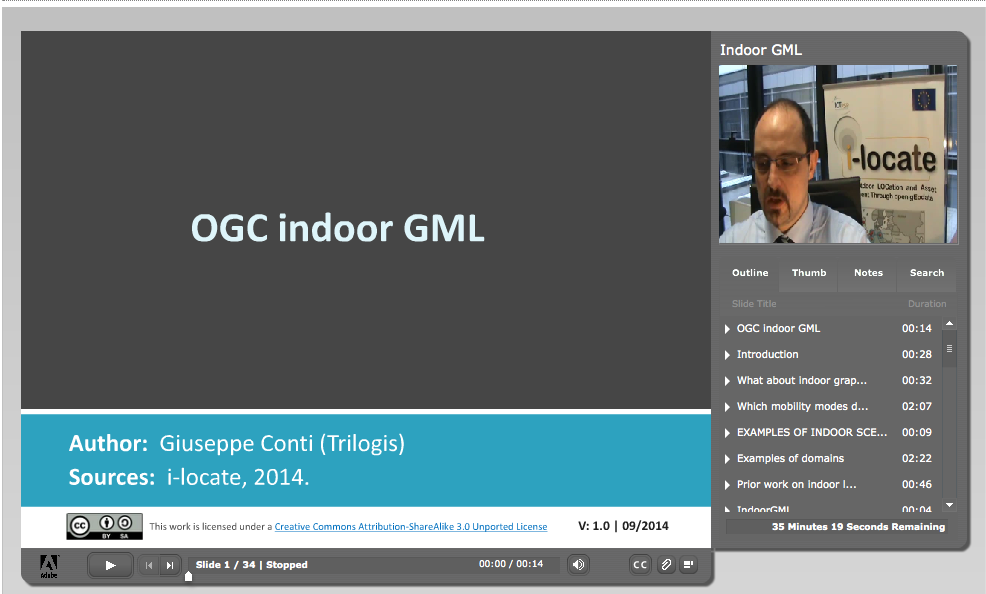
Online course of IndoorGML – the standard for navigation inside buildings
Recently we’ve reported that in mid December 2014 Open Geospatial Consortium published IndoorGML a new standard for modelling a spatial data of indoor spaces. As it’s typically with every complicated standard there are only couple of people who actually understand what it is all about. Today you will become one of them.
Accidentally I came across an European funded project called i-locate which is the first implementation of the IndoorGML standard and aims to bring the indoor location technology to European public sector. Fortunately one of project deliverables are openly available online learning materials.
On the project website, under the training section I’ve managed to find the online course of IndoorGML. During less than 1 hour the course will give you all the necessary information about the standard. The only drawback is that need to register on the e-learning platform to access the course.






